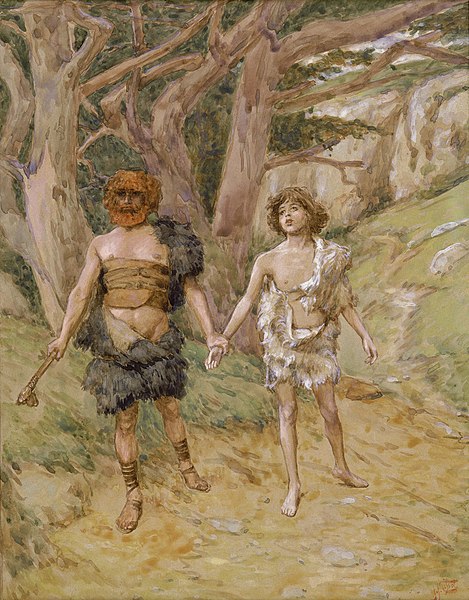The doctrine of the serpent seed, also known as the dual-seed or the two-seedline doctrine, is a controversial and fringe Christian religious belief which explains the biblical account of the fall of man by stating that the Serpent mated with Eve in the Garden of Eden, and the offspring of their union was Cain. This event resulted in the creation of two races of people: the wicked descendants of the Serpent who were destined for damnation, and the righteous descendants of Adam who were destined to have eternal life. The doctrine frames human history as a conflict between these two races in which the descendants of Adam will eventually triumph over the descendants of the Serpent.
An 1890 book advocating British Israelism. According to the serpent seed doctrine, the Ten Lost Tribes of Israel found their way to Western Europe and Britain, where they became the ancestors of the British and related peoples.
William Branham
In the biblical Book of Genesis, Cain and Abel are the first two sons of Adam and Eve. Cain, the firstborn, was a farmer, and his brother Abel was a shepherd. The brothers made sacrifices, each from his own fields, to God. God regarded Abel's offering, but not Cain's. Cain killed Abel and God cursed Cain, sentencing him to a life of transience. Cain then dwelt in the land of Nod, where he built a city and fathered the line of descendants beginning with Enoch.
Cain slaying Abel, by Peter Paul Rubens, c. 1600
Cain leadeth Abel to death, by James Tissot, c. 1900
A depiction of Cain burying Abel from an illuminated manuscript version of Stories of the Prophets
Cain and Abel. Plaster cast after bronze (1425–1438) by Jacopo Della Quercia (1374–1438), Bologna, Italy. National Museum of Scotland, Edinburgh






